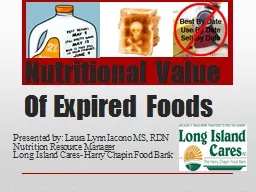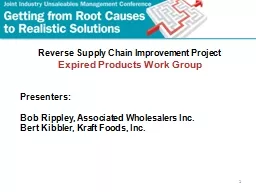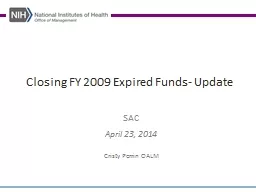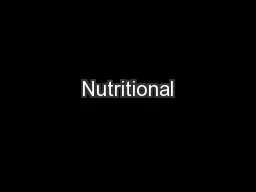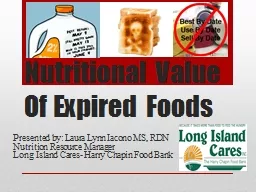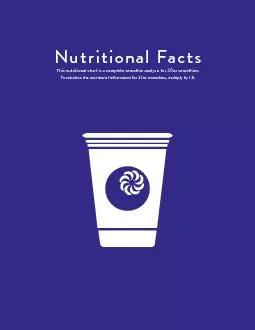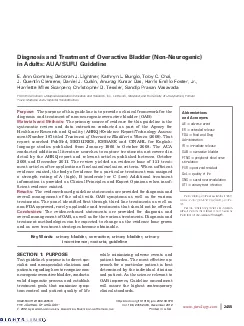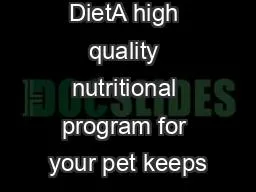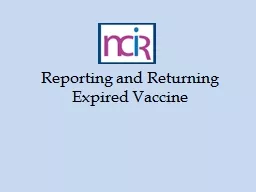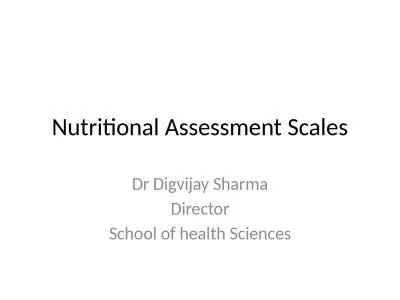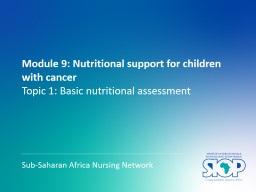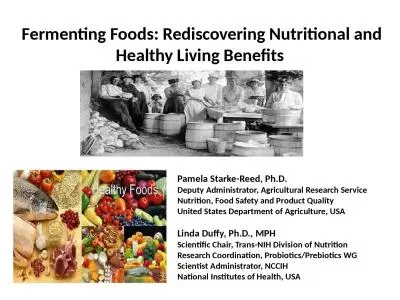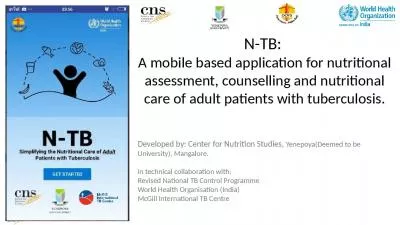PPT-Nutritional Value Of Expired Foods
Author : tatyana-admore | Published Date : 2016-04-10
Presented by Laura Lynn Iacono MS RDN Nutrition Resource Manager Long Island Cares Harry Chapin Food Bank Do all foods have the same rate of expiration You dont
Presentation Embed Code
Download Presentation
Download Presentation The PPT/PDF document "Nutritional Value Of Expired Foods" is the property of its rightful owner. Permission is granted to download and print the materials on this website for personal, non-commercial use only, and to display it on your personal computer provided you do not modify the materials and that you retain all copyright notices contained in the materials. By downloading content from our website, you accept the terms of this agreement.
Nutritional Value Of Expired Foods: Transcript
Download Rules Of Document
"Nutritional Value Of Expired Foods"The content belongs to its owner. You may download and print it for personal use, without modification, and keep all copyright notices. By downloading, you agree to these terms.
Related Documents

